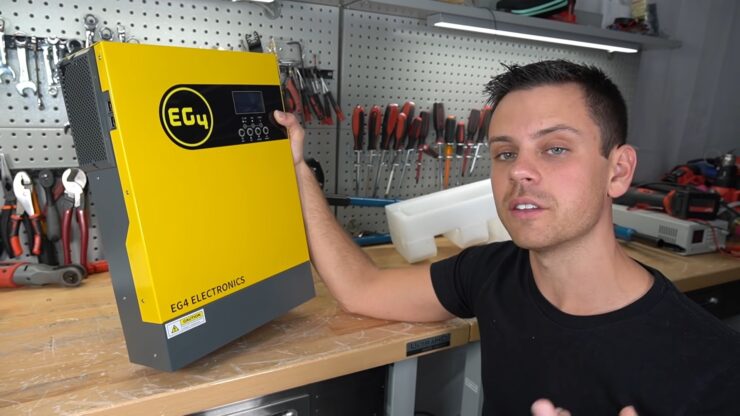Everybody who becomes interested in installing a solar panel system heard about solar inverters, but as it turns out, it’s quite often that people don’t really get what its function is, and why this part of the equipment is essential to any sort of solar installation.
Take a look at the best solar inverters reviewed for your personal use.
That’s why we decided to explain to you thoroughly what a solar inverter is, how it works, what its purpose is, and how you can connect it to solar panels.
What Is a Solar Inverter?
The solar inverter is often called the brain of the solar project and with a reason. It has an extremely important role in every solar installation, no matter how small it is. That means that solar inverter needs to be part of every residential solar panel construction, as well as part of a utility power plant.
It is the piece of the puzzle that will allow you to actually use the power of the sun that your solar panels collected, for lighting up your space and using all the electrical appliances.
What Is the Purpose of a Solar Inverter?
The main function and purpose of a solar inverter are to change or invert the direct current (DC) power solar panels made into the alternating current (AC). Since almost all homes, appliances, and businesses are based on AC usage, the inverters are a certain type of bond, the so-called gateway, between the photovoltaic system and all energy off-takers.
Now, given that inverter technologies are very advanced nowadays, besides their primary function, they can provide you with much more. They can offer you advanced utility control, as well as data monitoring, which is crucial for the inverter to make sure it will operate at the expected performance level.
How Does a Solar Inverter Work?

The first thing an inverter does is invert the direct current generated by solar panels into the alternating current. After it created the right power input, the inverter will send it into the fusebox in order for it to be delivered to your home or building efficiently.
The AC will be received by the switchboard, after which all the appliances in your home can start using it in the proper way. Now, if your solar panel system creates more electricity than you need, the surplus will be sent to the grid, or to the battery storage system, depending on how you set up this part to work.
Why Do Solar Cells Need an Inverter?
Solar cells need an inverter to turn the DC power into AC energy. Solar panels are collecting energy provided by the sun, after which they will start generating electricity. But they are not capable of creating an alternating current. They will provide you with direct current only, which means you need a solar inverter that has the capacity to make this much-needed shift from DC to AC.
How to Connect a Solar Panel to a Battery and Inverter?
This procedure might be a bit different in some cases, depending on what type of solar system you purchased and installed, but in general, these are the steps you need to take. First, you have to connect the panels to a battery bank, but make sure the output voltage from the panels is the same as the voltage of the battery bank. Then, you should connect the panels to a charge controller. Bear in mind that the controller should be placed close to the battery.
The next step implies creating a connection between the charge controller and the battery bank. This is a very important part because the controller will protect your battery from overcharging. In the end, you have to connect the battery bank to the solar inverter that will convert the DC cumulated inside of the battery to the AC you can use in your space. If the inverter is programmed to send the excess power to the grid, it will do that automatically.
What Is the Purpose of a Solar Inverter?
In the end, let’s summarize what the purpose of a solar inverter is. It will convert DC to AC and allow you to use the power solar panels gather from the sun. Also, it will identify the maximum power output and keep the performance level of the whole solar system consistent.
The inverter will allow you to keep track of the power output of your solar system, so you will be able to know all about diagnostics, error codes, and power production information. And in the case of an electrical arc, it will automatically shut down, therefore protecting the whole solar system from endangerment.

